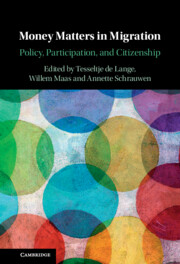Part II - Participation
Published online by Cambridge University Press: 12 November 2021
Summary

- Type
- Chapter
- Information
- Money Matters in MigrationPolicy, Participation, and Citizenship, pp. 147 - 244Publisher: Cambridge University PressPrint publication year: 2021



